Fishes
Media
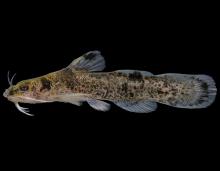
Species Types
Scientific Name
Noturus miurus
Description
The brindled madtom inhabits many of the same lowland streams and ditches as the tadpole madtom, and is nearly as common. Brindled madtoms are more often found in pools, however. The species also inhabits the Spring River system in southwest Missouri.
Media
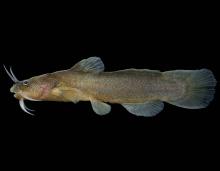
Species Types
Scientific Name
Noturus nocturnus
Description
The freckled madtom looks similar to the tadpole madtom and shares much of its range, but its upper jaw projects beyond the lower jaw, and the underside of the head and body are sprinkled with dark speckles.
Media
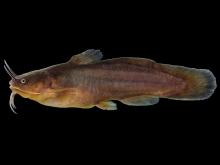
Species Types
Scientific Name
Noturus gyrinus
Description
The tadpole madtom occurs in the Bootheel lowlands and in a broad zone from southwest Missouri to northeast Missouri. This small, chubby catfish is most common in the Bootheel lowlands and in northeastern Missouri.
Media
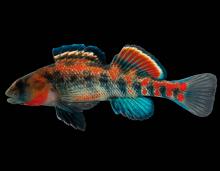
Species Types
Scientific Name
Etheostoma, Percina, Ammocrypta, and Crystallaria spp.
Description
Darters have been described as the hummingbirds of the fish world: colorful, small, and quick. Missouri has about 44 different types of darters. They are most diverse in the fast, clear, rocky streams of the Ozarks.
Media
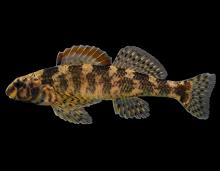
Species Types
Scientific Name
Etheostoma histrio
Description
In Missouri, the harlequin darter occurs only in our southeastern lowlands, in flowing streams and ditches with sandy bottoms. It is State Endangered because its small numbers and limited range make it vulnerable to extirpation.
Media

Species Types
Scientific Name
Pimephales promelas
Description
The fathead minnow has a blunt, rounded snout, rounded fins, a dusky stripe along the side, and a spot at the base of the tail fin. It is most abundant in pools of small prairie creeks because it tolerates rather high temperatures, extreme turbidity, and low oxygen.
Media
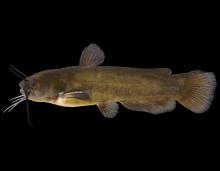
Species Types
Scientific Name
Ameiurus natalis
Description
The yellow bullhead is widespread in Missouri. It is the most common bullhead catfish in the Ozarks and Bootheel lowlands. It has white chin barbels, and the edge of its tail fin is straight, not notched.
Media
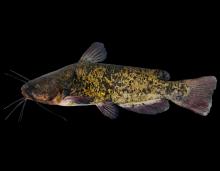
Species Types
Scientific Name
Ameiurus nebulosus
Description
In Missouri, the brown bullhead occurs in quiet, clear waters in wildlife refuges in southeast Missouri. Elsewhere in the state, it is stocked and possibly escapes. It has mottled sides and an elongated barbel at the corner of the mouth.
Media
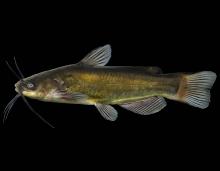
Species Types
Scientific Name
Ameiurus melas
Description
The black bullhead is widespread in Missouri. It is the most common bullhead catfish in north and west portions of the state. It has dusky or black chin barbels, and the edge of its tail fin is notched, not straight.
Media

Species Types
Scientific Name
Esox americanus vermiculatus
Description
The grass pickerel is the most common and widely distributed pike in Missouri. It is also the smallest, seldom exceeding 10 or 12 inches in length.
See Also


Media

Species Types
Scientific Name
Amphiuma tridactylum
Description
The three-toed amphiuma is an eel-like, completely aquatic salamander. It has very small forelimbs and hind limbs, each with three tiny toes. In Missouri it’s found only in the Bootheel region.
Media

Species Types
Scientific Name
Siren intermedia nettingi
Description
The western lesser siren is an eel-like, aquatic salamander with external gills, small eyes, small forelimbs with four toes, and no hind limbs. In Missouri, it’s found mostly in the Bootheel and northward in counties near the Mississippi River.
About Fishes in Missouri
Missouri has more than 200 kinds of fish, more than are found in most neighboring states. Fishes live in water, breathe with gills, and have fins instead of legs. Most are covered with scales. Most fish in Missouri “look” like fish and could never be confused with anything else. True, lampreys and eels have snakelike bodies — but they also have fins and smooth, slimy skin, which snakes do not.





















